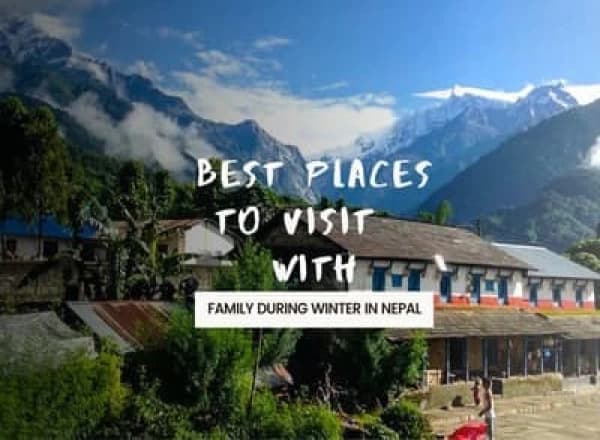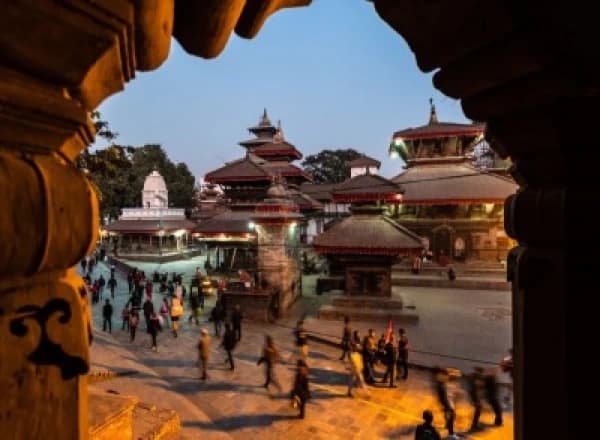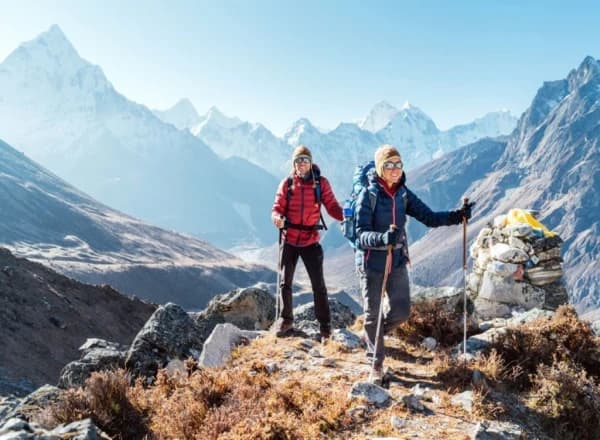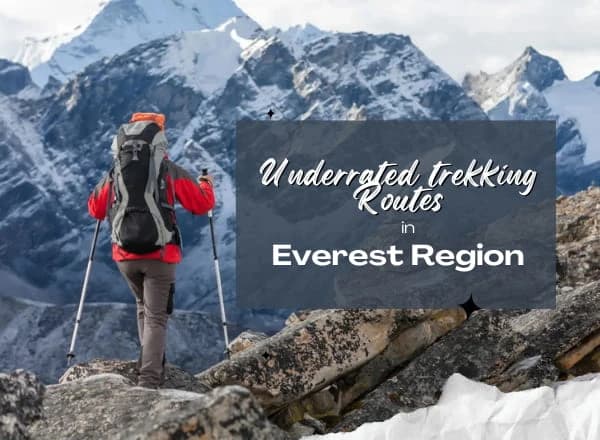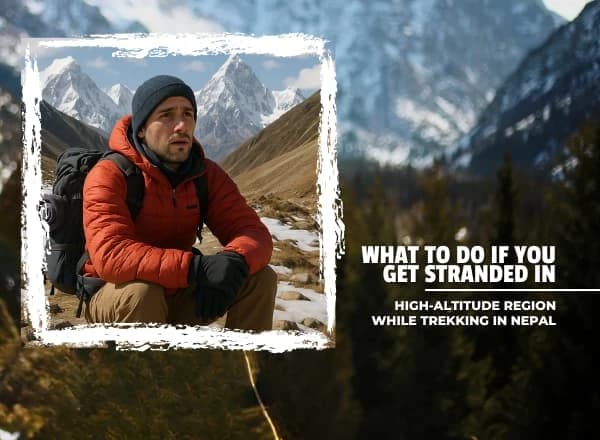Highlights of Trekking to Everest Base Camp:
- Enjoy the splendid sunrise view from Kalapathar.
- Summit the base camp of the world's highest mountain, Mount Everest
- The touristic hub and gateway of the Everest region, Namche Bazar
- Visit Tengboche monastery, the holiest monastery of the Khumbu region.
- Enjoy mesmerizing sights of the Himalayas from the Lukla flight
- Enjoy the awe-inspiring sights of Khumbu glacier, Everest (8848m), Mount Pumori (7,161m), Mount Lhotse (8,516m), Mount Nuptse (7,561m), and Amadablam (6,812m)
- Trek through the rich landscape of the UNESCO world heritage site, Sagarmatha National Park
- Experience the warm hospitality of the Sherpa community

Highlights of EBC Trek during the Winter Season:
Peaceful Trails:
The peak trekking season in Nepal is spring (September-November) and autumn (March-May), and during these seasons, the trekking trails are overcrowded with trekkers either trekking to the base camp or returning from the base camp.
However, trekking during the winter means you will meet very few trekkers along the way. The peaceful and less crowded trail allows you to spend a memorable time connecting with nature. You can spend as many hours in the spot as you like.
Easy accommodation
Another perk of trekking during the winter is comfortable accommodation. During the peak season, you have to pre-book your rooms in the teahouses, or you will end up in the dorm rooms.
However, in the winter, you don’t have to pre-book your room. You will get a cozy room that meets your requirements at a discounted price.
Easy flight Tickets
Unlike in the peak season, flight tickets to Lukla are readily available in winter. You will get the flight tickets without pre-booking, and in some instances, you can also get discounts due to the off-season.
Discount on Trekking Packages and Teahouses
The winter season in Nepal is marked as an off-season. Therefore, you can get special discounts on trekking packages, food, accommodation, and Lukla flight.
Everest Base Camp Trek in Winter Season Month:
The three months, December, January, and February are winters here in Nepal
Temperature of the Everest Trail in December:
December is the beginning ofthe winter season in Nepal and is relatively warmer than January.

From the given temperature data of the past five years, the Everest base camp trail in December has the highest temperature of about 10˚C in Lukla, and lowest at around -18˚C in Gorakshep.
Temperature of the Everest Trail in January:
January is the mid-winter here in Nepal and is the coldest of all months.

The temperature recorded in January in different locations of the Everest base camp trek shows the highest temperature of around 8.5˚C in Lukla and the lowest of almost -20˚C in Gorakshep. In January, the trail is covered with snow, and the nights are cold, but the days are warmer, with 5-7 hours of sunshine.
Temperature of the Everest Trail in February
February marks the end of the winter season in Nepal and the temperature starts rising by the end of the month.

February is the last month of winter in Nepal. As the month approaches, the cold freezing that was the mountain starts to warm up slowly. The highest temperature recorded during February is around 10˚C in Lukla, and the lowest is around -18˚C in Gorakshep.
Challenges of the EBC trail during the Winter Season:
While the trail of EBC during the peak season is filled with blossoming wildflowers, the winter trekking trail is mostly filled with snow. Although the path is snowy and icy, the views of snow-capped pinnacles are splendid. The Everest Base camp trek can be completed within 14 days at any season, but snowfall and snowy trails may increase your trekking days in winter, so it is best to add a few extra days that you can use in an emergency, like bad weather conditions.
Everest Base Camp Map:

Everest Base Camp Trek 14 days Itinerary:
Day 01: Arrival in Kathmandu
Day 02: Fly to Lukla from Kathmandu and Trek to Phakding (2700m)
Day 03: Phakding to Namche Bazaar (3440m)
Day 04: Acclimatization in Namche (3440m)
Day 05: Trek to Tengboche (3860m)
Day 06: Trek to Dingboche (4410m)
Day 07: Acclimatization in Dingboche.
Day 08: Trek to Lobuche (4940m)
Day 09: Trek to Everest Base Camp (5364 meters) then back to Gorak Shep (5164m)
Day 10: Hike to Kalapathar (5545m) and trek down to Pheriche (4120m)
Day 11: Trek to Namche (3440 meters)
Day 12: Trek to Lukla (2860m)
Day 13: Fly back to Kathmandu
Day 14: Departure.
✔ More details of 14 Days Everest Base Camp Itinerary

Food you can have during the Everest base camp trek that keeps you warm and strong:
The Everest Base camp trail has several options when it comes to food. From Nepalese variety to Western cuisines, trekkers can enjoy several foods of their liking.
The menu of the base camp trail is fully loaded with dishes to provide strength and warmth to the trekkers. Dishes like Thukpa, Sherpa stew, Curries, MoMo, and Soups of different kinds are provided in the teahouses for a winter trek. Along with this, teahouses offer other dish items like Nepali staple Dal Bhat, Pizza, Roti, Pancake, Porridge, Mashed Potatoes, Spaghetti, Macaroni, and Boiled egg/fried eggs.
The items available on the menu of Everest region will provide you with carbohydrates, protein, and vitamins needed for your body while keeping you warm. You can enjoy your food with tea/coffee/milk/hot water for extra heat.
Must have essentials during Trekking in Everest Base Camp during Winter:
Since trekking in the winter means you will have to fight extreme cold weather, you need to prepare well for the trip and pack only the essentials avoiding over packing for things that will not be useful.
Lists to pack efficiently for trekking to avoid over or under-packing:
 You can take a screenshot and ☑tick mark for the lists you have packed.
You can take a screenshot and ☑tick mark for the lists you have packed.
Tips for trekking Everest in the Winter Season:
Trekking on the icy and snowy path requires care. Hence, you have to prepare yourself mentally and physically to face the challenges you might face during your winter EBC trek. To help you make your trip comfortable and successful, we have listed few tips that will help you plan your trip accordingly.
No matter what season you are trekking in, peak season, monsoon or winter, preparing your body to walk through the rugged trails is very helpful. Physical exercises like squats, stair climbing, hikes, lunges, and cardio exercises, like cycling, swimming, running, and snow walking, are beneficial for the EBC trek in winter.
When we talk about finding the right gear, we don’t only discuss trekking poles or layers of clothing but also snow boots, gaiters, gloves, sleeping bags, windbreakers, waterproof jackets and many more.
Especially when you are trekking in winter, you will be walking on a snowy trail and also might face heavy snowfall on the way. Hence, packing the right gear is very crucial for trekkers. For more tips about trekking gear, you can also consult with your guide before the trek.
Note: For packing the right gear, check out our must-have essentials during Trekking in Everest Base Camp during the winter section.
-
Altitude sickness is real:
Preventing yourself from altitude sickness is very important when trekking at a higher elevation. To avoid altitude sickness, always let your body acclimatize properly to the change in altitude, hydrate enough, walk slowly, and possibly use medications like Diamox or other tablets. In case you feel uncomfortable, always ask for help from your guide.
-
Be extra careful when it comes to clothing:
Layering is the best way to face the cold weather of the Everest region, as it allows you to maintain your body temperature and make your long walk comfortable. The 3-layer principle is the one that you can follow.
✔ Base layer: To manage the moisture by staying in contact with your skin
✔ Middle layer: Insulating layer to keep your body warm and
✔ Outer layer: To protect you from extreme weather conditions like wind, snow and rain.
Also, get a reference from must-have essentials during Trekking in Everest Base Camp during the winter section.
-
Always check the weather forecast:
Checking the weather forecast is very crucial while trekking in winter. Sometimes, you will start a day with a ray of sunshine, and by daytime, it will snow all of a sudden. So checking the forecast beforehand will allow you to plan the day accordingly.
The winter days are comparatively shorter than other seasons of Nepal. Hence, starting your trek early in the morning will allow you to escape the snow and freezing wind. It will also help you arrive at your overnight destination in time, giving you enough time to rest.
The key to a successful trip is keeping your body healthy. Therefore, we recommend you fuel your body. Eating three meals a day rich in protein, carbohydrates, and vitamins will give you the energy to face the challenges and walk continuously for hours. Also, don’t forget to drink enough water to avoid dehydration and altitude sickness.

Main points to avoid during winter trekking:
Apart from the above-mentioned useful tips for the EBC trek in winter, you might want to know what to avoid during winter trekking in Nepal. A simple mistake can ruin your trip, so we recommend you to avoid the following points:
- Trekking without a guide
- Not applying sunscreen and moisturizer
- Skipping acclimatization
- Trekking in normal shoes
- Not drinking enough water
- Overpacking or under-packing
- Moving too fast at a high altitude
- Trekking without proper gear
Follow our blog:
✔ Common Mistakes to Avoid During Everest Base Camp Trek
✔ Top 7 Best Treks in the Everest Region
✔ Tips for a Successful Everest Base Camp Trek
✔ 7 Reasons You Will Love Everest Base Camp Trek
Conclusion:
Nepal is a popular destination for trekking, and we welcome thousands of novice and experienced trekkers from around the world every year. Although trekkers trek to the Himalayas during spring and autumn, the real adventure is in the winter. Here at the Beyond the Limits Treks & Expedition Pvt. Ltd, we have special packages for winter trekking.
So, if you are planning your winter trip to Nepal, contact us now, and we will offer you the best packages that meet your requirements.
Popular Everest Region Packages:
✔ Gokyo Ri Trekking 14 Days
✔Everest Three Pass Trekking
✔ Everest Base Camp Trek via Chola Pass
✔ Everest View Helicopter Tour
✔ Everest View Heli Tour
✔ A Complete Guide to Everest 3 Passes Trek

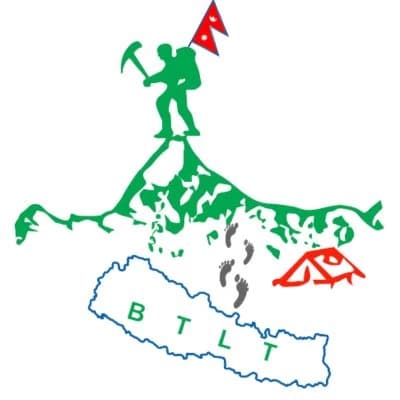






 You can take a screenshot and ☑tick mark for the lists you have packed.
You can take a screenshot and ☑tick mark for the lists you have packed.
